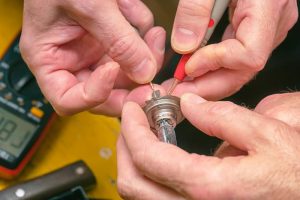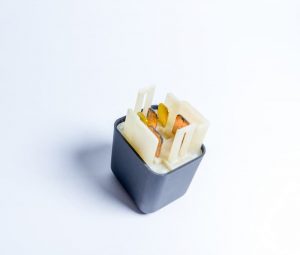Automobile headlight systems are only marginally more sophisticated than your home’s light switches, despite how intricate they may seem. The electrical circuit between your home’s power and the light is closed when a light switch is turned on, turning the light on. Vehicle headlight systems are a little more difficult because a smaller “switch” is required to turn on the bigger one. A small amount of power from the dashboard headlight switch is used by a relay to “flip” a larger switch, turning on the headlights. Despite their typically good dependability, they will ultimately break down through use and time. Try the following to test your headlight relay;
- Turn on your lights
On your lights. If only one light turns on, the relay is working well, and your headlamp is broken. Both headlights are powered by the relay.
- Listen for the click
Locate the fuse box that contains the headlight relay or relays under the hood, and then open it. Listen with your ear close to the relay. You could also wedge a long screwdriver’s handle into your ear and touch the relay with that end. Like a stethoscope, you can hear the relay click via the screwdriver.
- Replace the relay
The headlights should be turned on by a helper. If the relay clicks, the coil is functioning, but the contacts are unknown to you. You most likely have a bad headlight relay if you can’t hear the click. The best approach to test a headlight relay safely is to swap it out for a reliable one. Your auto supply shop could have a return policy, so you could always buy one if you don’t have a spare. You may also take a working relay out of the box and insert it into the headlight relay socket. Most vehicles use multiple interchangeable relays in the same box; before you start pulling them out, ensure they are all the same by comparing the numbers stamped on top.
- Tests with a multimeter
A multimeter can be used to test the relay, but you must be familiar with its operation. Remove the relay from its socket, then use the multimeter’s ohmmeter section to measure resistance across the coil. Position the relay such that the “sideways” 30/51 post is on the right and the middle terminal post, denoted by “87a,” is vertical to you. Test the centre 87A post and the right 30/51 post; the resistance should be less than 100 ohms. Replace the relay if it exceeds that level. On the relay, note the “86” power and “85” ground contacts. Locate the correct openings by looking in the fuse box. Set your meter to read in “Volts DC” and connect the ground and power terminals on the box with the probes. With the headlights on, you should see roughly 12 volts, and when they are off, nothing. Replace the relay if you see this voltage but the headlights are still not working. Check to see if you have a blown fuse or a damaged power connection elsewhere if you don’t get electricity here.
What does a headlight relay do

A relay is essentially a low-current electromagnetic switch that controls a higher-current circuit. A coil and a switching mechanism with a set of contacts are both inside a relay. Until the relay is triggered, most automobile relays are generally open, which means that current does not go between the contacts.
Two relays—one for the high beams and one for the low beams—control the headlights in a typical computer-controlled headlight circuit. A third headlight relay to turn on the daytime running lights is also present in some automobiles (the dimly lit headlights that automatically come on during the day). A signal is delivered to a computer, also referred to as the body control module, when low beam activation is requested via the headlight switch (BCM). The relay’s coil receives ground from the BCM in response, causing the coil to conduct electricity. The magnetic field produced by the current flowing through the coil pulls the relay’s contacts shut. The low beams then switch on when current passes via the connections to the headlight assembly.
It’s important to note that not all headlamp control systems controlled by computers employ relays. As an illustration, in some systems, the BCM transmits a request for headlight activation to a specific kind of smart fuse box, also known as an integrated power module (IPM). The IPM employs integrated drivers to turn on the low beams after receiving the request from the BCM. Additionally, headlight relays are typically absent from earlier, computer-less headlight systems. In contrast, the dimmer switch usually allows current to pass straight from the headlight switch to the headlights and then through the headlight lenses.
NB: To ensure you enjoy the full impact of your headlight lenses, wipe the headlight lens using a headlight restoration wipe to remove any obstruction such as oxidation, grits, dirt, and haze.
Symptoms of a Bad Headlight Relay?
- Headlamps won’t turn on
- Headlamps won’t turn off
- Concealed Headlamps won’t work properly






